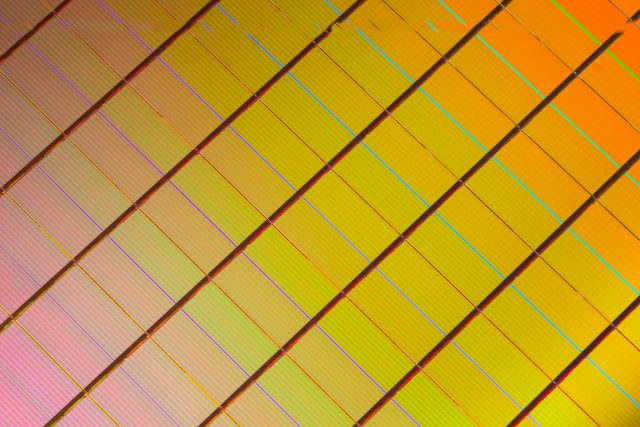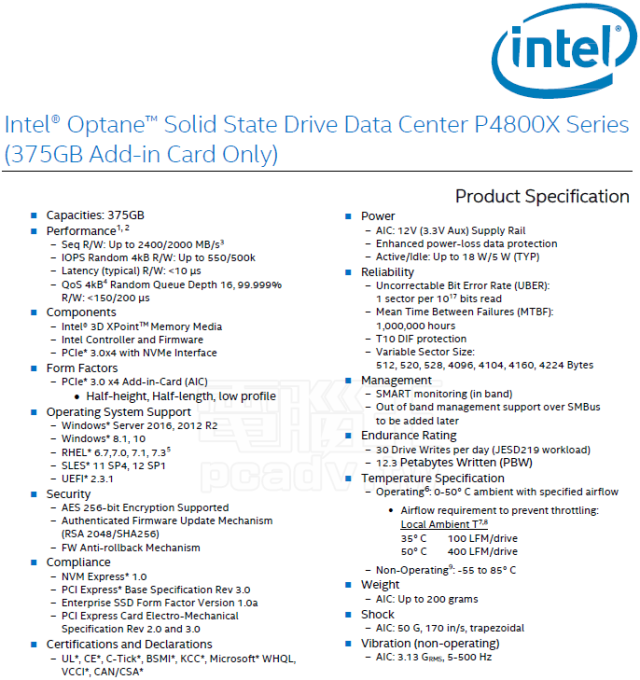Specs for first Intel 3D XPoint SSD: so-so transfer speed, awesome random I/O

A 3D XPoint wafer. (credit: Intel)
In 2015, Intel and Micron announced 3D XPoint (pronounced “three dee cross point”), a new form of high-speed, non-volatile, solid-state storage. But we’re still waiting for products that actually use the technology. The first 3D XPoint storage should hit the market this year. Branded “Optane,” Intel briefly documented (on a PDF that has since been pulled from its website) the first specs of the first of these products: the Intel SSD DC P4800X is a 375GB half-height, half-length PCIe NVMe card aimed at enterprise markets. Optane should also eventually come in 750GB and 1.5TB versions. Taiwanese site PCADV spotted the specs while they were up.
When Intel announced 3D XPoint, the company said that it would be 1,000 times faster than NAND flash, 10 times denser than (volatile) DRAM, and with 1,000 times the endurance of NAND, too, which would greatly reduce the susceptibility of 3D XPoint drives to write-induced failures. The specs of this first SSD reflect these ambitions, but perhaps not in quite the way people would have expected.

P4800X spec sheet. (credit: PCADV)
The 2,400MB/s read speed is high, but it’s not king of the hill. Introduced in 2014, Intel’s SSD DC P3700, the company’s nearest equivalent product using NAND flash technology, boasts up to 2,800MB/s reads. Samsung’s consumer-oriented 960 EVO manages 3,200MB/s read performance.
Read 8 remaining paragraphs | Comments

 Cisco
Cisco